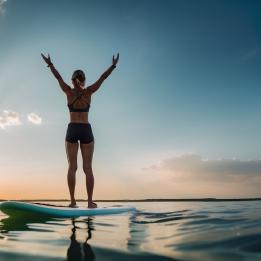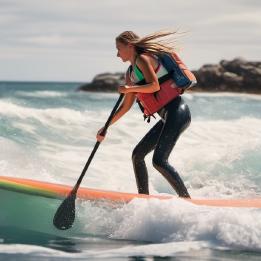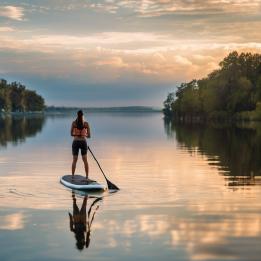The Joy of SUP Yoga - An Overview
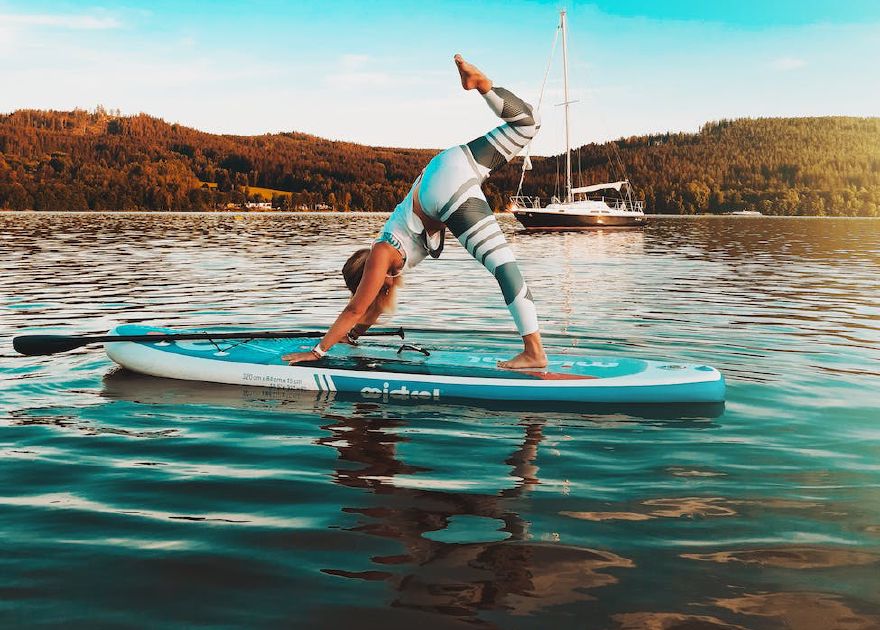
Stand-up paddleboard yoga is one of the fastest-growing water sports today. Combining yoga poses on a paddleboard may seem challenging, but it offers immense benefits for both the body and mind. This beginner’s guide will provide an overview of SUP yoga and why you should give it a try.
If you’re interested in learning more about why SUP is so great, see our introductory post.
What is SUP Yoga?
SUP yoga combines traditional yoga poses and breathing techniques on a stand up paddleboard floating on calm water. It engages your core and tests your balance like no other workout. SUP yoga helps you tune out distractions and find focus as you connect with nature. In fact, although it takes some getting used to, the instability of the board makes every pose a new learning experience.
Benefits of SUP Yoga
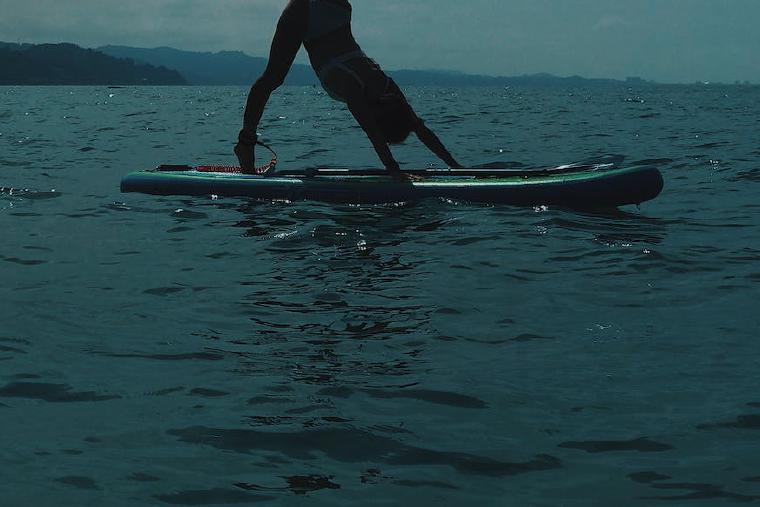
To emphasize, practicing yoga on a paddleboard provides both physical and mental benefits:
- Works out muscles that standing yoga does not target, like your core, arms, shoulders and back. The instability of the board forces you to engage more muscles to stay balanced.
- Being out on the water surrounded by nature is therapeutic. The peacefulness fosters mindfulness.
- Improves your balance, strength and endurance as you adapt yoga poses to the unstable board surface.
- Alleviates stress and anxiety. The combination of yoga, water and nature creates a tranquil experience.
- Reignites your passion for yoga by taking it to a new, fun environment.
Getting Started with SUP Yoga
SUP yoga is suitable for yogis of all levels. Here’s what you need to know to get started:
- Take a beginner SUP yoga class to learn the basics. Many yoga studios and paddleboard shops offer them.
- Choose a wide, stable paddleboard with a traction pad. Inflatable boards work well and are easy to transport.
- Use a paddleboard leash and wear a personal flotation device for safety.
- Start on calm, flat water like a lake, away from wind and waves.
- Move slowly between poses and keep your feet hip-width apart for stability.
- Focus on poses that maintain two points of contact with the board. Avoid balancing on one leg.
- Be patient with yourself as you adapt. Falling in the water is part of the fun!
Sample Poses for Beginners
Here are some basic poses to start with as you get comfortable balancing on your paddleboard:
Mountain Pose: Stand with feet hip-width apart, engage your core and find steady breath. This is the foundation for all poses.
Warrior I: From Mountain Pose, step one foot forward and lunge down, keeping your back leg straight and heel lifted. Raise arms overhead.
Tree Pose: Shift weight to one leg, pressing that foot into the board. Place the other foot on your ankle, shin or thigh and hold hands in prayer position.
Downward Facing Dog: In Plank Pose, tuck your toes under and lift your hips up and back to make an inverted “V” shape with your body.
SUP yoga allows you to experience nature, challenge your practice and improve balance and strength – all while having fun floating on water! With some preparation, you’ll be standing tall on your paddleboard in no time.
Advanced SUP Yoga Poses to Master
Once you’ve gotten the basics down and feel comfortable balancing on your paddleboard, you can start to challenge yourself with more advanced poses. Here are some examples to work up to:
Crow Pose: Squat down with knees wide, palms flat on the board and shift your weight forward. Lift your feet off the board, balancing on your hands. Keep your core engaged.
Side Plank: From a plank position, shift your weight onto one hand and the side of your foot. Reach your other arm straight up and look up toward your top hand.
Headstand: Start on your knees. Place your forearms on the board shoulder-width apart and interlace your fingers to form a triangle. Place the crown of your head on the board, engage your core and lift your knees off the board as you extend your legs straight up.
King Dancer Pose: From Mountain Pose, shift your weight to one leg. Bend your other knee, grab your foot from behind, and extend that leg up and back, opening your chest. Find your balance.
Boat Pose: Sit on the board with your knees bent and feet on the board. Lean back slightly and lift your feet a few inches off the board as you extend your arms forward. Your body forms a “V” shape.
Be sure to progress slowly as you build the core strength and balance needed for these more challenging poses. Consequently, don’t push past your limits – part of SUP yoga is learning when to pull back and finding the pose that’s right for you in that moment. Mastering the basics is a lifelong learning process!
Find Your Flow on the Water
SUP yoga is accessible for yogis of all levels and provides a full-body workout unlike any other. The instability of the paddleboard enhances your mindfulness, focus and sense of accomplishment. As a beginner, start on calm water, move slowly between poses, and don’t get discouraged if you fall in! With some practice, you’ll grow stronger both physically and mentally as you find your zen out on the water.
